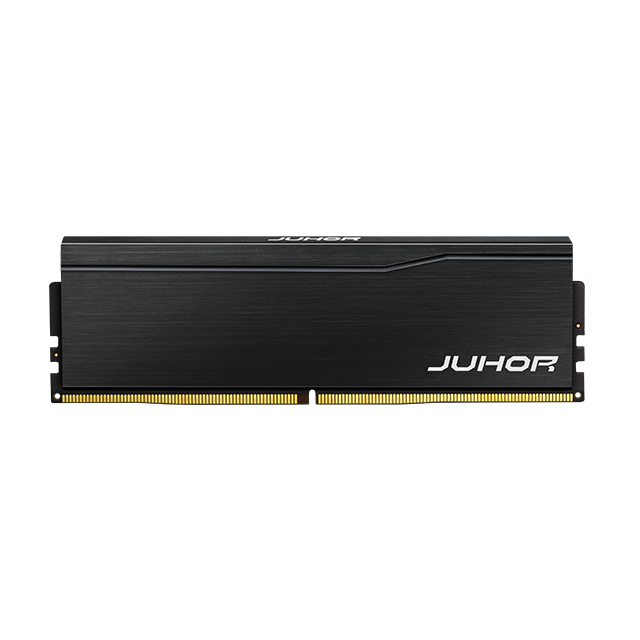In contemporary digital systems, memory (DRAM - Random Access Memory) plays a pivotal role. Whether in terminal devices or core data processing and storage equipment, memory serves as an indispensable buffer for CPUs to handle data processing and caching. A powerful core processing unit must be paired with a high-speed, wide-bandwidth data access and storage unit. This article delves into the working principles of DDR memory, tracing its evolution from SDRAM to the latest DDR5 technology, providing a comprehensive understanding of this crucial hardware component.
To understand memory better, we first need to distinguish between two main types: Read-Only Memory (ROM) and Random Access Memory (RAM). ROM stores fixed data that is typically pre-written during manufacturing and can only be read during operation. In contrast, RAM is directly interfaced with the CPU, supporting both read and write operations at high speeds. It serves as temporary storage for operating systems and running applications. However, RAM is volatile, meaning all stored data is lost when power is turned off.
SDRAM (Synchronous Dynamic Random Access Memory) was initially adopted as the standard for early computer memory. To enhance data transfer efficiency, DDR (Double Data Rate SDRAM) was introduced. DDR achieves double data rates by transmitting data on both the rising and falling edges of the clock cycle. Over the past two decades, DDR technology has rapidly evolved from DDR1 to DDR5. Particularly in the mobile internet era, driven by big data, AI, and 5G, DDR4 began to show limitations, paving the way for DDR5, which offers higher frequencies, lower voltages, and enhanced intelligent control.

The core feature of DDR memory is its ability to perform two data transfers within a single clock cycle—one on the rising edge and another on the falling edge. This design allows DDR to double the data transmission speed without increasing the clock frequency. For instance, DDR4 starts at 2133 MT/s, while DDR5 begins at 4800 MT/s, with potential scaling up to 8400 MT/s or higher.
DDR employs burst mode, allowing continuous block data transfers to boost efficiency. Additionally, prefetch mechanisms are integral to DDR technology. Different DDR versions have varying prefetch widths; for example, DDR3 uses 8n prefetching, while DDR5 advances to 16n, enabling larger data transfers per cycle and enhancing overall bandwidth.
A complete DDR subsystem includes the DDRC (controller), DDR PHY (physical layer interface), and SDRAM chips. The DDRC manages data flow, arbitration scheduling, and protocol state machines, ensuring efficient data handling. The DDR PHY handles actual data transmission, maintaining signal integrity and stability. Together, these components ensure high-efficiency and reliable data transmission.
Each memory cell has a unique address used for precise data location during read/write operations. Efficient addressing algorithms in DDR memory facilitate rapid data access, meeting modern computing's high throughput demands.
DDR memory relies on synchronized clock signals to coordinate data transmission. Each clock cycle contains a rising and falling edge, allowing simultaneous data transfers. Multi-channel designs enable concurrent transmission of multiple data bits, significantly boosting parallel access capabilities. For example, DDR4 supports 64-bit or 128-bit data bus widths, further enhancing data transfer efficiency.
Before each data transfer, DDR memory performs a precharge operation to reset the charge state of memory cells, ensuring accurate subsequent data transmissions. This mechanism is crucial for maintaining memory stability and reliability.
While DDR evolved from SDRAM, significant differences exist. SDRAM transmits data only on the rising edge of the clock signal, whereas DDR utilizes both rising and falling edges, doubling the data transfer rate. Moreover, DDR operates at progressively lower voltages—DDR4 at 1.2V and DDR5 at 1.1V—reducing power consumption and improving energy efficiency. These advancements make DDR suitable for high-performance computing, data centers, and advanced gaming.

DDR5 introduces several innovations beyond doubled data rates and reduced voltage. It incorporates PMIC (Power Management Integrated Circuit) for finer power management and increased supply stability. Additionally, DDR5 supports BL16 burst lengths, allowing more data to be transferred in a single burst, enhancing memory access efficiency. The use of SPD Hub and I3C protocol further boosts intelligent management and initialization speeds.
In summary, DDR memory has made remarkable strides from SDRAM to DDR5, becoming an essential part of modern computing systems. Looking ahead, technologies like DDR6 will continue to push the boundaries of data transfer speeds and energy efficiency, catering to the growing demands of high-performance computing. For users seeking top-tier performance and future-proof capabilities, DDR5 is undoubtedly the best choice. Whether you're a tech enthusiast or a professional engineer, understanding DDR memory principles will help make informed technical decisions. Shenzhen Juhor Precision Technology Co., Ltd. offers high-quality DDR4/DDR5 memory solutions, ideal for building efficient and reliable computing platforms.